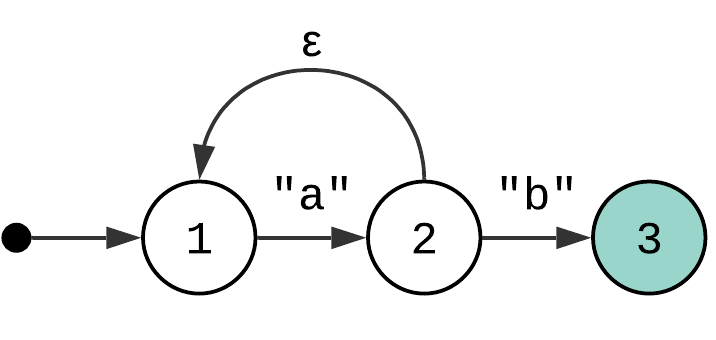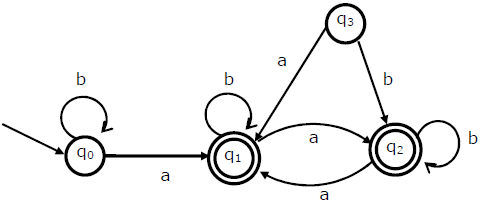

Li,jis the regexp of the language from qi to qj. In this case, the final state is also initial so we really just need to add a star: (ab+(b+aa)(ba)(a+bb)). You may toy with this algorithm using Vcsn, a tool for rational expressions and automata. we successively remove q2: and then q3: then we still have to apply a star on the expression from q1 to q1.

In the previous example:ĭo that until you eliminated all the inner states (i.e., keep the initial state and the final state), and just read the result on the transition from the initial state to the final state (here d+ab*c). Eliminate all states except q and the start state q0. For each accepting state q, apply the reduction process to produce an equivalent automaton with regular expression labels on the arcs. When the solution to a problem can be seen as set of states with transitions from ones to others, modeling them as a nondeterministic finite automatas makes clear how the solution works and allows to spot deficiencies. Before building complex state machine we need to learn the basics blocks. Once you treated all the couple (p, q), remove the state s. Constructing a regular expression from a nite automaton 1. From a Regex to a Nondeterministic Finite Automata. For each such couple (p, q) add a transition from p to q which is labeled by E(p, q) + E(p, s)E(s, s)*E(s, q) where E(p, s) means "the expression that labels the transition from p to s. Then consider all the couples (p, q) where p is a predecessor (states from which a transition reaches s, 0 in the picture) and q a successor (state 2). Then choose a state s to eliminate, say state 1 in the following picture. First, make sure you have a single initial state and a single final state (you may add fresh states and spontaneous transitions if necessary). Recall that a regular expression is a pattern that describes the strings within a. It supports a rich syntax with Unicode support, has extensive options for configuring the best space vs time trade off for your use case and provides support for cheap deserialization of automata for use in nostd environments. For every regular expression, there is an equivalent finite state machine. The key idea is that you are going to build an automaton labeled by rational (aka regular) expressions rather than letters. Crate regexautomata src A low level regular expression library that uses deterministic finite automata. View Finite Automata To Regular Expression - GNFA Method(1).pdf from CSE 303 at Stony Brook University. The state-elimination method in particular is simple to understand. They are very well described in Automata and rational expressions by Jacques Sakarovitch. There are several algorithms to perform this task: the "state-elimination method" from Brzozowski and Mc Cluskey, the resolution of a system of linear equation, the method from McNaughton and Yamada, etc.


 0 kommentar(er)
0 kommentar(er)
